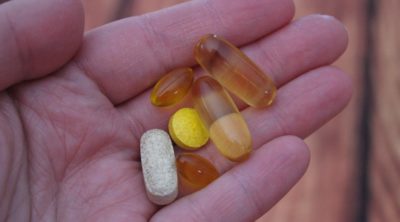
Sand fleas or mole crabs are usually found buried in water saturated sand particles. Learn the basic tips on how to catch sand fleas, and you can easily collect a handful of these fishing baits.
At the foremost mention of sand fleas, the first thing that comes to our mind is their painful bites and accompanied allergy symptoms. Indeed sand fleas are bothersome crustaceans which mostly bite in the ankles and lower legs. But, when we talk about sand fleas for fish bait, they refer to another group of crustaceans that are harmless for humans. Before we actually jump to our discussion on how to catch sand fleas, let’s try to understand some basic information about these creatures.
What are Sand Fleas?
As the name goes, these organisms remain most of their time underneath sand in the shoreline. By appearance, they look somewhat similar to insects. But the fact is, sand fleas are not even a distant relative of land insects. These organisms are grouped under crustaceans, which are characterized by presence of tough exoskeleton and segmented body. They share the same taxonomic order with real crabs. The alternative names for sand fleas (scientific name: Emerita sp.) are sand crabs, mole crabs, sea cicadas and beach hoppers.
Tips on Catching Sand Fleas for Bait
Mole crabs or sand fleas are distributed in beaches all over the world. These crab like creatures are popularly used as baits in catching certain fish types, such as red fish, pompano, etc. You can purchase live or frozen sand fleas from bait stores for your angling project. But, the interesting part is, you can catch sand fleas easily from the beaches. They neither have claws, nor do they bite humans. So, you don’t have to worry about the dangers of handling these creatures.
Sand fleas feed on small planktons and organic matter that are carried to the beaches by wave action. In short, the intertidal zone is an exclusive place where you can look for these baits. But, you need to keep a watchful eye to identify sand fleas that normally inhabit this zone. Yes, these crustaceans resemble the color of rippled sand, which help in disguising themselves to their dwelling environment.
Here are some tips to catch sand fleas for fishing bait.
- Sand fleas are very sensitive and they remain buried deep in the sand, if they sense foot pressure. So, early morning time is the best time that you can head for catching sand fleas. Less beach walkers and you can expect more sand fleas in the intertidal zone.
- A popular tool used for catching these small crabs is sand flea rake. It is a simple rake, designed to collect these creatures from sand. If you don’t own one, you can scoop sand with your hands at the right time to catch sand fleas.
- Walk in the swash zone and focus on sandy areas that remain saturated with water. Try to identify darker colored sand that forms a boundary between the ocean bottom sand and beach sand. This is the area where sand fleas inhabit frequently.
- Look for sand flea colony in the marked zone. You can identify them from the ‘V’ shaped antennae that protrudes slightly from the sand surface. Then, be prepared and wait for low tide waves.
- As soon as the wave starts receding, go to the spot, dig sand flea rake in the dark sand and drag it towards your direction. After the first session, check for any caught sand fleas. You can keep them in a bucket with some wet sand on it.
If you are collecting lots of sand fleas, consider carrying a small cooler along with you. Fill it with some wet sand and put the sand fleas. This simple preparation keeps them alive for longer hours. After separating sand fleas from their natural habitat, they may survive for 3 days or more under controlled conditions. Keeping sand fleas cool, changing sand everyday and avoiding sunlight exposure are some tricks to keep them alive for several days to come.


